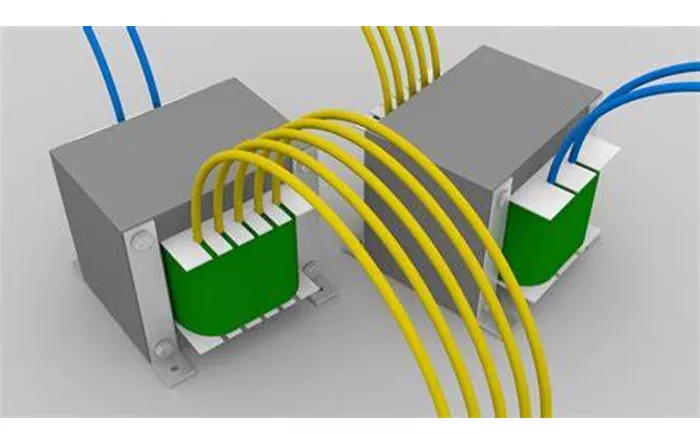Transformers are fundamental components in electrical systems, playing a crucial role in the transmission, distribution, and utilization of electrical power. They enable the efficient and safe delivery of electricity to various applications by regulating voltage levels. Understanding the function of transformers is essential for anyone involved in electrical engineering or power management.
The Basic Principle of Transformers
A transformer is a passive electrical device that transfers electrical energy from one circuit to another through electromagnetic induction. This process involves two or more coils of wire wrapped around a magnetic core. When an alternating current (AC) flows through the primary coil, it creates a varying magnetic field. This magnetic field induces a voltage in the secondary coil, allowing the transformer to change the voltage level of the electrical energy. This principle, discovered by Michael Faraday in 1831, is the foundation of modern transformers.
Key Functions of Transformers in Electrical Systems
Voltage Transformation
One of the primary functions of transformers is to change voltage levels. This is achieved through the turns ratio of the primary and secondary coils. If the secondary coil has more turns than the primary coil, the voltage is stepped up. Conversely, if the secondary coil has fewer turns, the voltage is stepped down. This ability to adjust voltage is crucial for efficient power transmission and distribution.
Step-Up Transformers
Step-up transformers are used to increase voltage levels. They are typically installed at power plants to raise the voltage of the generated electricity to a level suitable for long-distance transmission. Higher voltage reduces the current required to transmit the same amount of power, which in turn minimizes energy losses due to resistance in the transmission lines.
Step-Down Transformers
Step-down transformers reduce voltage levels. These transformers are essential at substations near cities and residential areas, where the high voltage from transmission lines must be lowered to a safer level for use in homes and businesses. By stepping down the voltage, transformers ensure that electrical energy can be safely and efficiently distributed to end-users.
Power Distribution
Transformers facilitate the efficient distribution of electrical power. In power distribution networks, transformers step up the voltage for long-distance transmission and then step it down at various substations to levels suitable for local distribution. This process ensures that electrical energy is delivered reliably and efficiently to consumers.
Safety and Isolation
Transformers also provide safety and isolation in electrical systems. Isolation transformers are designed to separate the primary and secondary circuits, preventing direct electrical connections between them. This separation protects against electrical shocks and suppresses electrical noise, making transformers essential for sensitive equipment and medical devices.
Efficiency and Energy Management
Transformers contribute to energy efficiency by minimizing power losses during transmission. By stepping up the voltage for long-distance transmission, transformers reduce the current and, consequently, the energy lost due to resistance in the transmission lines. This efficiency is critical for maintaining a reliable and cost-effective electrical supply.
Practical Applications of Transformers
Power Transmission Networks
In power transmission networks, transformers are used to step up the voltage at power plants and step it down at substations. This process ensures that electrical energy can be transmitted over long distances with minimal losses and then distributed safely to residential and commercial consumers.
Industrial Settings
In industrial settings, transformers provide the necessary voltage levels for various machinery and equipment. They ensure a stable power supply for production lines and automation systems, supporting efficient manufacturing processes.
Renewable Energy Integration
Transformers play a vital role in integrating renewable energy sources into the power grid. They convert the variable output from solar and wind farms into stable, grid-compatible voltage levels, facilitating the efficient transfer of renewable energy.
Specialized Applications
Transformers are also used in specialized applications such as electric vehicle charging stations and smart grids. In electric vehicle charging stations, transformers convert the grid voltage to suitable levels for charging batteries. In smart grids, transformers enable dynamic voltage regulation and efficient power distribution, supporting advanced features like load balancing and real-time monitoring.
Conclusion
Transformers are indispensable in modern electrical systems. They enable the efficient transmission and distribution of electrical power by regulating voltage levels, ensuring safety, and minimizing energy losses. Understanding the functions and applications of transformers is crucial for maintaining reliable and efficient electrical infrastructure. Whether in power transmission networks, industrial settings, or renewable energy integration, transformers play a vital role in delivering electrical energy safely and efficiently to consumers.
Related Topics:

